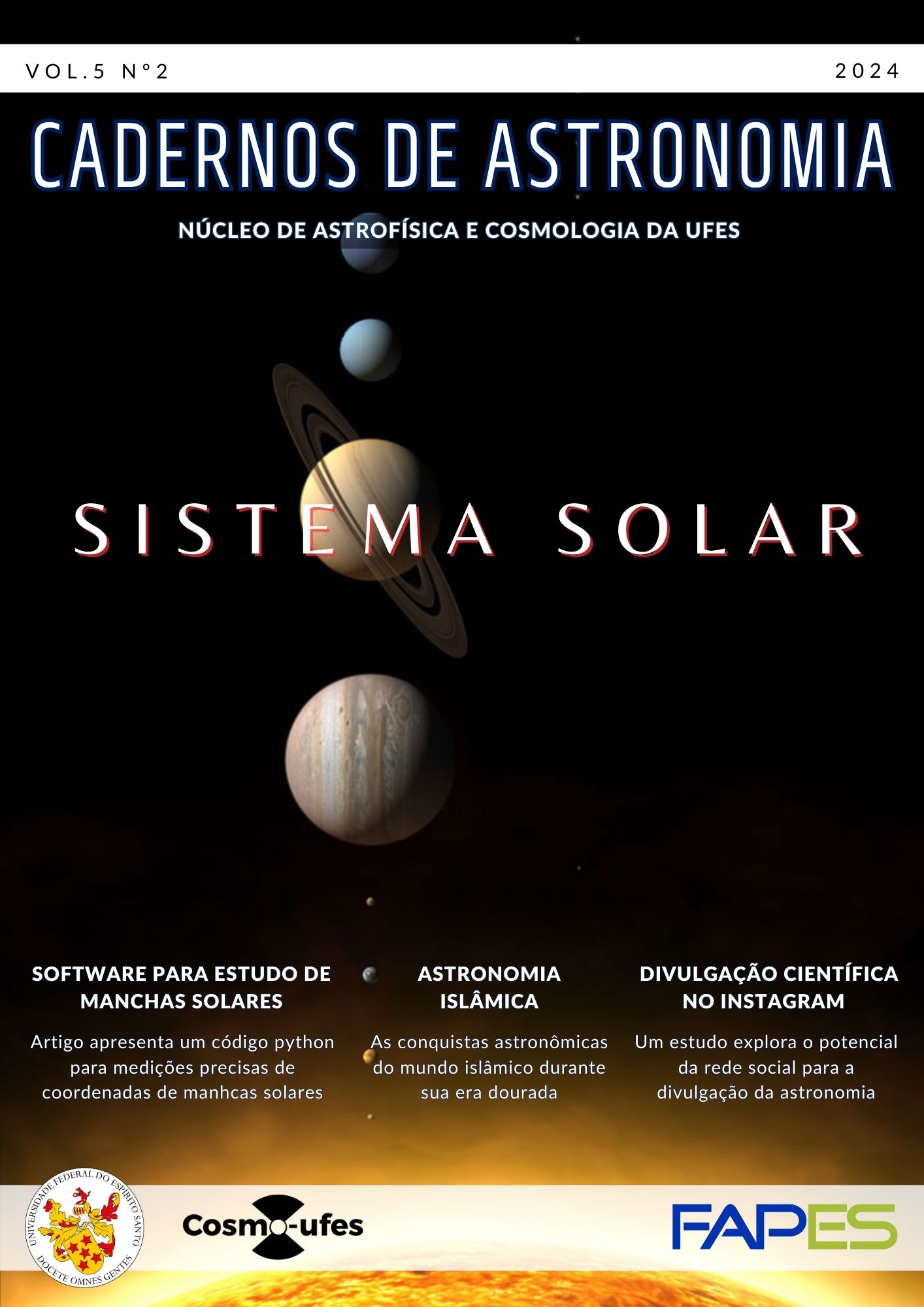DESI 2024: um possível indício do fim da constante cosmológica?
Mots-clés :
energia escura, DESI, constante cosmológicaRésumé
Discussão sobre a divulgação dos primeiros resultados do Dark Energy Spectroscopic Instrument (DESI), a partir da medida das impressões deixadas pelas oscilações acústicas de bárions na distribuição de galáxias e quasares. Resultados estes que sugerem, pela primeira vez na literatura acadêmica, uma variação temporal para a equação de estado da componente de energia escura do universo. Explica-se brevemente o projeto DESI, sua operação e como a cosmologia moderna pode ser impactada caso este resultado seja efetivamente consolidado por observações futuras.
Références
A. G. Adame et al., DESI 2024 VI: Cosmological Constraints from the Measurements of Baryon Acoustic Oscillations (2024). ArXiv:2404.03002.
H. Velten, Matéria escura, energia escura e a busca por uma nova teoria para a gravitação, Cadernos de Astronomia 1(1), 40 (2020).
I. J. Lewis et al., The Anglo-Australian Observatory 2dF facility, Monthly Notices of the Royal Astronomical Society 333(2), 279 (2002). ArXiv:astro-ph/0202175.
D. G. York et al., The Sloan Digital Sky Survey: Technical Summary, Astronomical Journal 120, 1579 (2000). ArXiv:astro-ph/0006396.
S. Weinberg, The Cosmological constant problems, in 4th International Symposium on Sources and Detection of Dark Matter in the Universe (DM 2000) (2000), 18–26. ArXiv:astro-ph/0005265.
A. G. Riess, The expansion of the Universe is faster than expected, Nature Reviews Physics 2(1), 10 (2019). ArXiv:2001.03624.
M. Chevallier e D. Polarski, Accelerating universes with scaling dark matter, International Journal of Modern Physics D 10(02), 213 (2001). ArXiv:gr-qc/0009008.
E. V. Linder, Exploring the expansion history of the universe, Physical Review Letters 90(9), 091301 (2003). ArXiv:astro-ph/0208512.
A. Albrecht et al., Report of the Dark Energy Task Force (2006). ArXiv:astro-ph/0609591.
N. Aghanim et al., Planck 2018 results. VI. Cosmological parameters, Astronomy & Astrophysics 641, A6 (2020), Erratum: Astron. Astrophys. 652, C4 (2021). ArXiv:1807.06209.
D. Brout et al., The Pantheon+ Analysis: Cosmological Constraints, The Astrophysical Journal 938(2), 110 (2022). ArXiv:2202.04077.
D. Rubin et al., Union Through UNITY: Cosmology with 2,000 SNe Using a Unified Bayesian Framework (2023). ArXiv:2311.12098.
B. O. Sánchez et al., The Dark Energy Survey Supernova Program: Light curves and 5-Year data release (2024). ArXiv:2406.05046.
J. Carron, M. Mirmelstein e A. Lewis, CMB lensing from Planck PR4 maps, JCAP 09, 039 (2022). ArXiv:2206.07773.
M. S. Madhavacheril et al., The Atacama Cosmology Telescope: DR6 Gravitational Lensing Map and Cosmological Parameters, The Astrophysical Journal 962(2), 113 (2024). ArXiv:2304.05203.
W. Giarè et al., Robust Preference for Dynamical Dark Energy in DESI BAO and SN Measurements (2024). ArXiv:2407.16689.
Z. Wang et al., The role of LRG1 and LRG2’s monopole in inferring the DESI 2024 BAO cosmology (2024). ArXiv:2405.02168.
V. Patel e L. Amendola, Comments on the prior dependence of the DESI results (2024). ArXiv:2407.06586.
G. Efstathiou, Evolving Dark Energy or Supernovae Systematics? (2024). ArXiv:2408.07175.
Téléchargements
Publiée
Numéro
Rubrique
Licence
(c) Copyright Hermano Velten, Rodrigo von Marttens 2024

Ce travail est disponible sous la licence Creative Commons Attribution 4.0 International .






